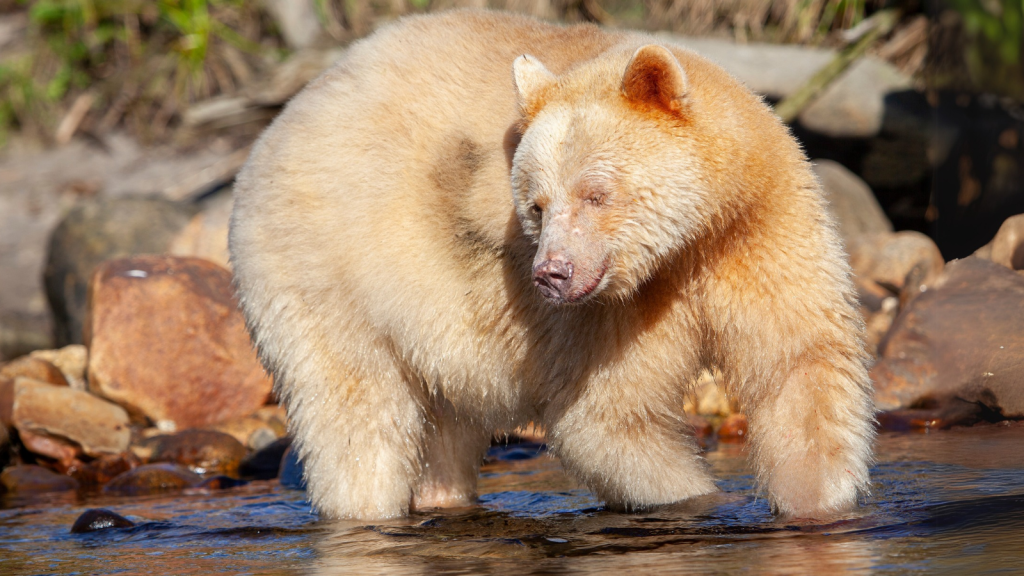Deep in the lush rainforests of British Columbia, a rare and enchanting creature roams. The Kermode bear, also known as the spirit bear, is a subspecies of the American black bear with a unique genetic twist. These ghostly white bears have captured the imagination of nature lovers worldwide, but there’s still so much to learn about them. From their sacred status among indigenous peoples to their surprising fishing techniques, these elusive animals are full of surprises. Ready to uncover some fascinating secrets about Canada’s spirit bears?
They’re Not Albinos
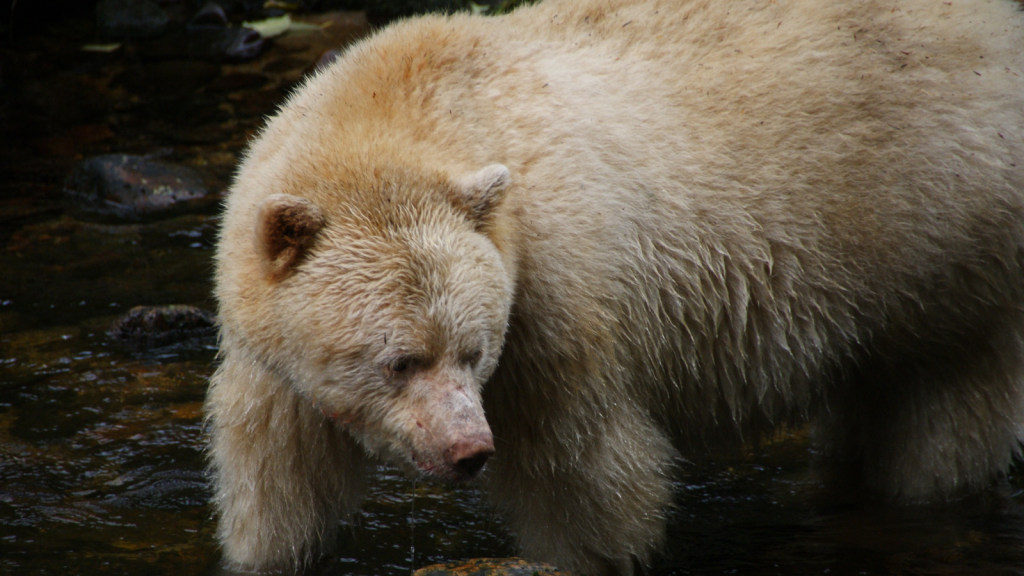
Despite their creamy white coats, Kermode bears aren’t albinos. Their unusual colour comes from a rare recessive gene that both parents must carry. This gene affects only their fur colour, leaving their skin and eyes dark like other black bears. Interestingly, this gene is similar to the one that causes red hair in humans.
They’re Rarer Than Giant Pandas
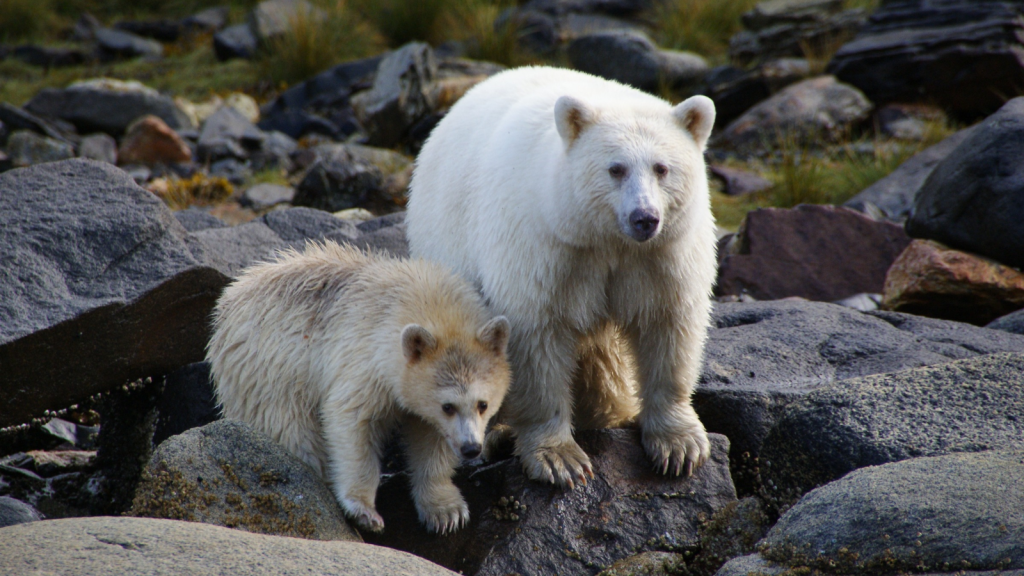
With only about 400 spirit bears in existence, they’re one of the rarest bears in the world. To put that in perspective, there are more giant pandas in the wild. This makes spotting a Kermode bear an incredibly special experience. Most of these bears live on a few islands along British Columbia’s central and north coast.
They’re Sacred to First Nations People

The Kitasoo/Xai’xais and Gitga’at First Nations have long revered the spirit bear. These indigenous groups have protected the bears for thousands of years, keeping their existence secret from fur trappers to ensure their survival. In their culture, spirit bears are believed to hold supernatural powers and are considered symbols of peace and harmony.
They’re Expert Salmon Catchers
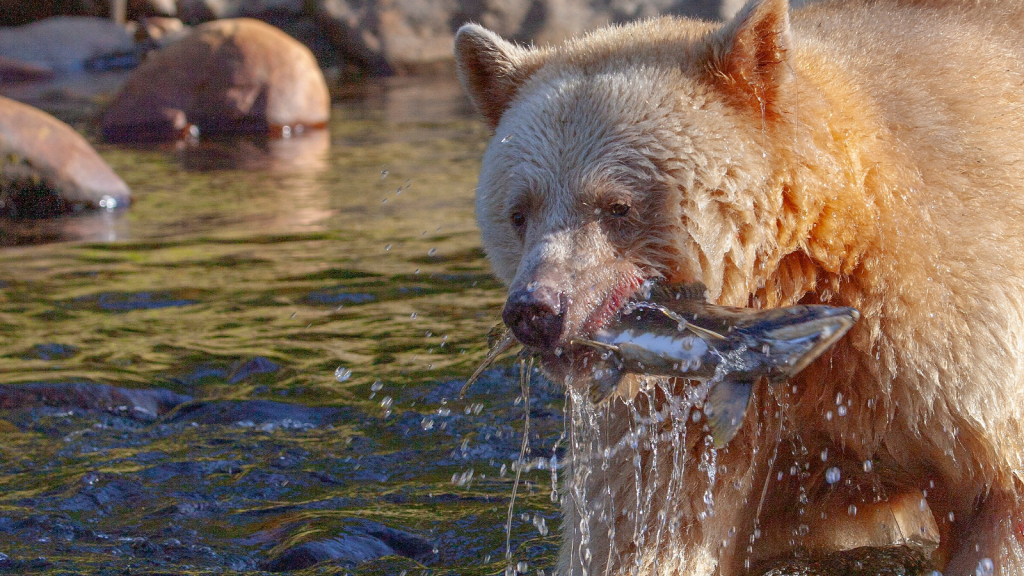
Kermode bears are brilliant fishers. Their white coats make them less visible to salmon in the sunlight, giving them a unique advantage over their black-furred cousins. This clever camouflage allows them to catch about 30% more fish during daylight hours. They often stand motionless in rivers, waiting for salmon to swim close before snatching them with their powerful jaws.
They Have a Sweet Tooth
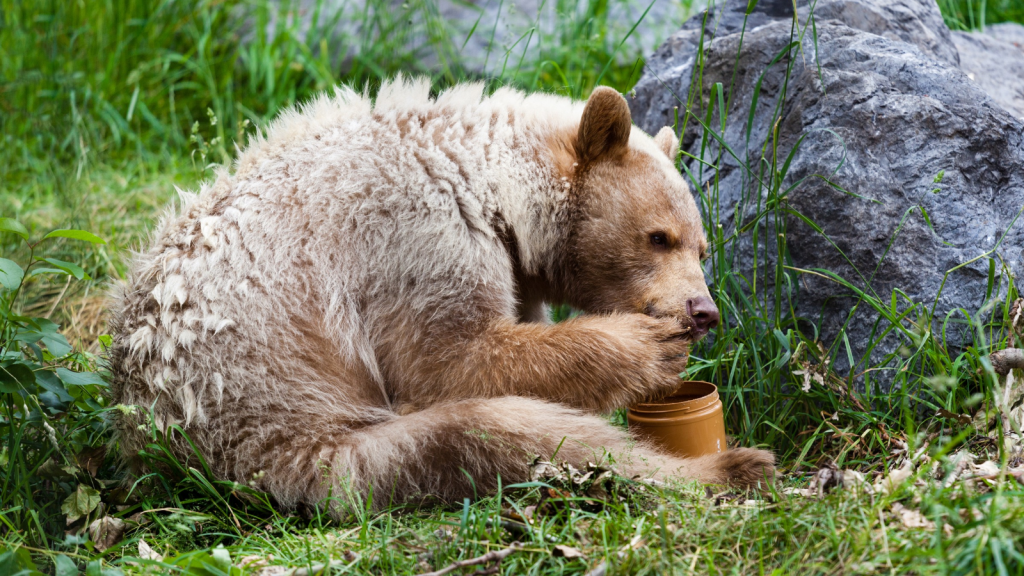
Like other bears, Kermodes love honey. They’ll risk painful stings to raid beehives for this sweet treat. Their diet also includes berries, nuts, and insects, making them true omnivores. In autumn, they can spend up to 18 hours a day foraging and eating to prepare for winter.
They’re Excellent Swimmers
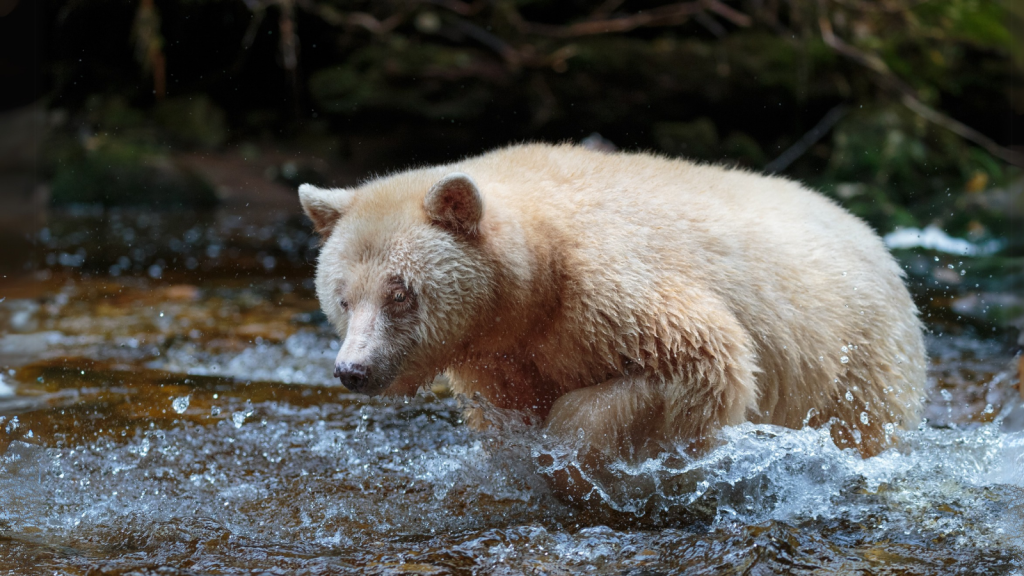
Spirit bears are strong swimmers, often crossing rivers and even venturing into the ocean. Their powerful legs and buoyant fat layer help them navigate through water with ease, allowing them to reach isolated islands in search of food. They’ve been known to swim for kilometres at a time, using the currents to their advantage.
They’re Not Always White
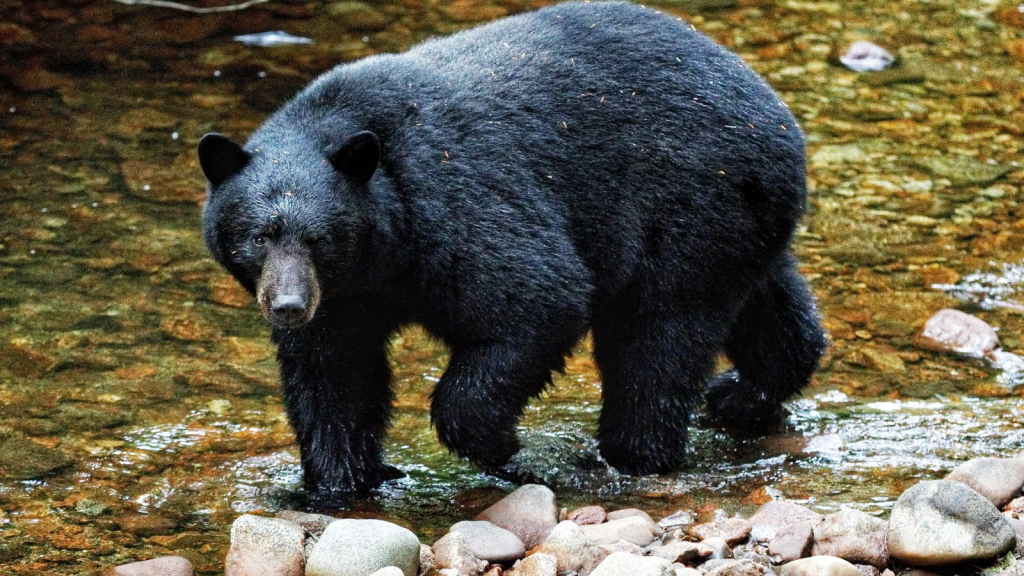
Surprisingly, not all Kermode bears are white. About 10% of cubs born to spirit bear parents are actually black. This genetic quirk adds another layer of mystery to these fascinating creatures. Even more intriguingly, two black bears carrying the recessive gene can produce a white cub.
They Have an Incredible Sense of Smell
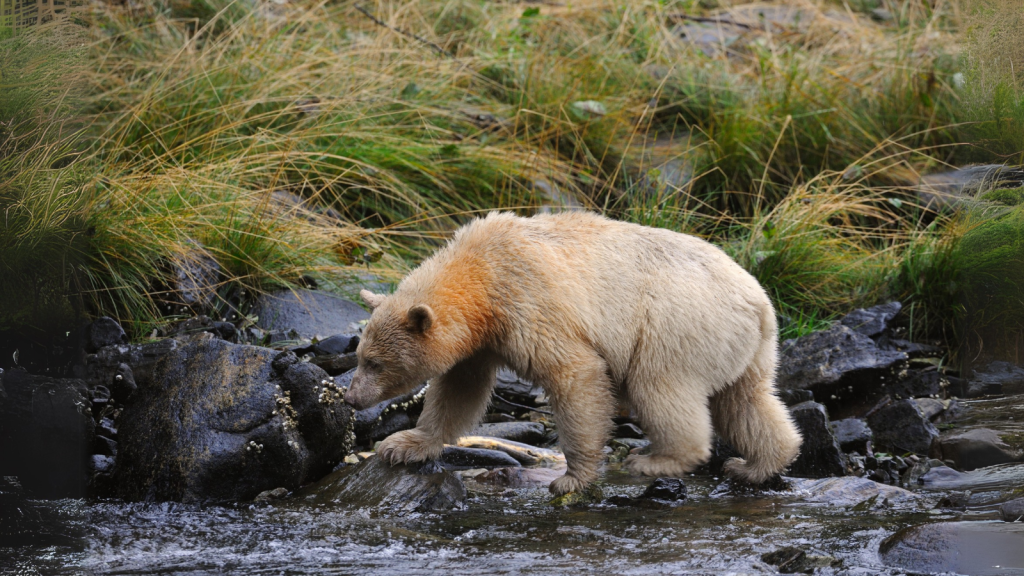
A Kermode bear’s nose is its superpower. They can smell food from over a kilometre away, helping them find everything from ripe berries to spawning salmon. This keen sense also helps them avoid danger. Their sense of smell is estimated to be about seven times stronger than that of a bloodhound.
They’re Mostly Vegetarian

Despite their fearsome appearance, spirit bears eat mostly plants. About 80% of their diet consists of berries, grasses, and other vegetation. They only turn to meat when plant food is scarce. In spring, they often feast on skunk cabbage and sedges, which are rich in protein and help them recover from winter weight loss.
They’re Excellent Climbers
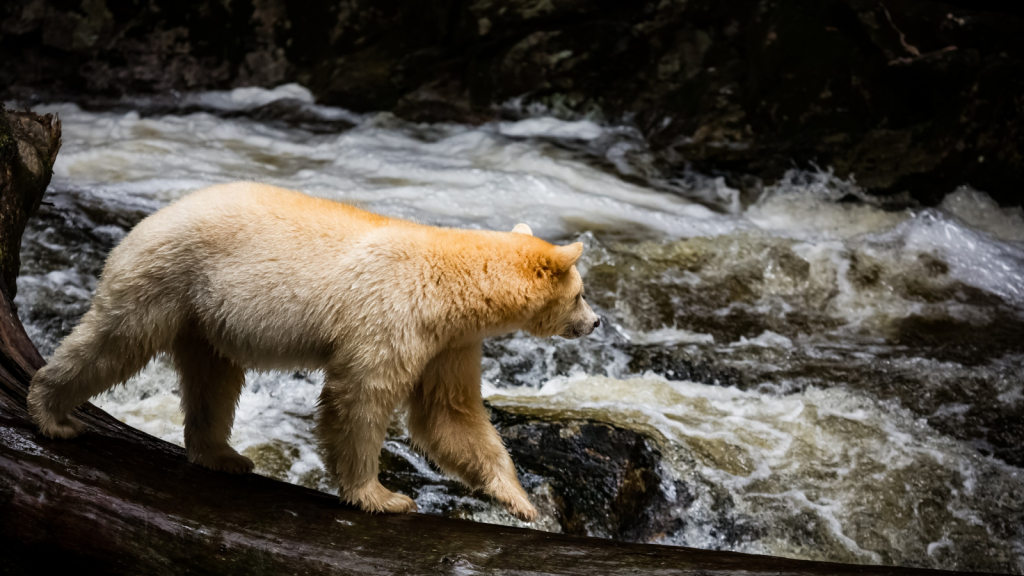
Don’t be fooled by their bulky bodies – Kermode bears are agile climbers. They often scramble up trees to escape danger or to reach tasty treats like nuts and fruit. Their sharp claws are perfect for gripping bark. Young cubs are particularly adept climbers, often playing and resting high up in the trees.
They Don’t Actually Hibernate
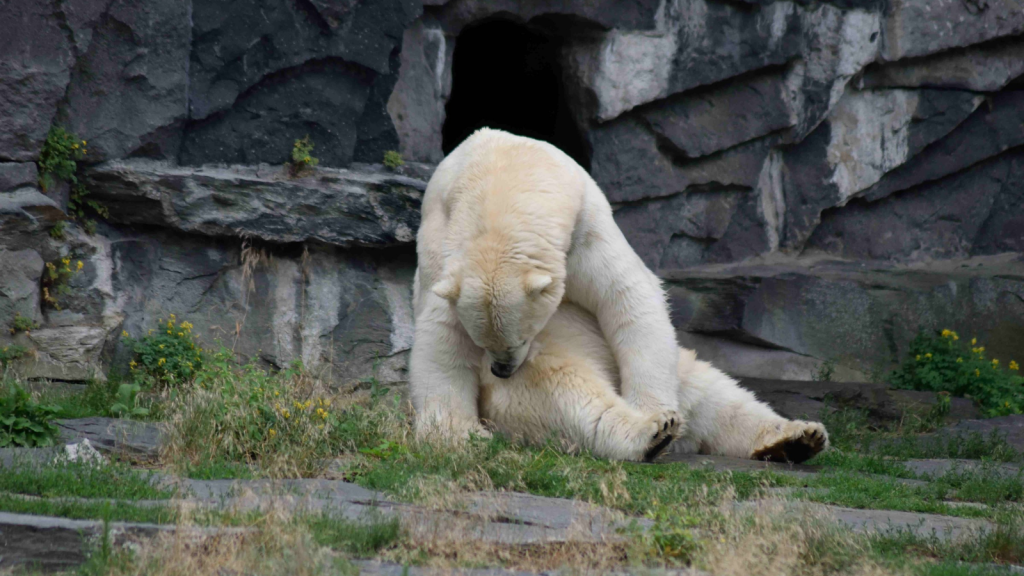
Unlike some bear species, Kermode bears don’t truly hibernate. Instead, they enter a state of torpor during winter, where their heart rate and metabolism slow down. They can wake up and become active if needed. During this time, they may lose up to 30% of their body weight.
They’re Crucial to the Ecosystem
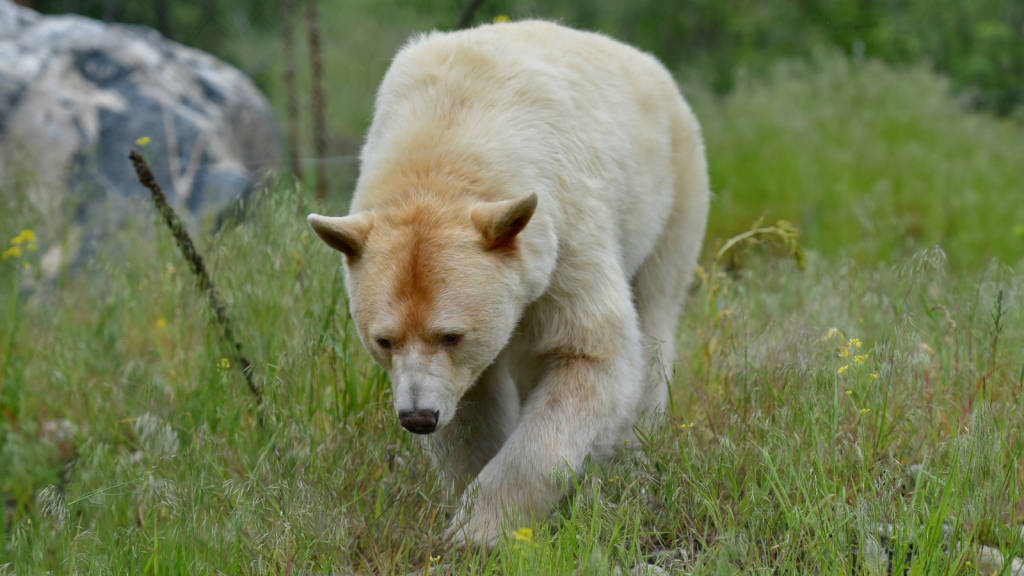
Spirit bears play a vital role in their forest homes. As they feed on salmon, they spread nutrient-rich fish remains throughout the forest, fertilising the soil and supporting plant growth. This process, known as nutrient cycling, helps maintain the health and biodiversity of the entire ecosystem.
They’re Threatened by Climate Change
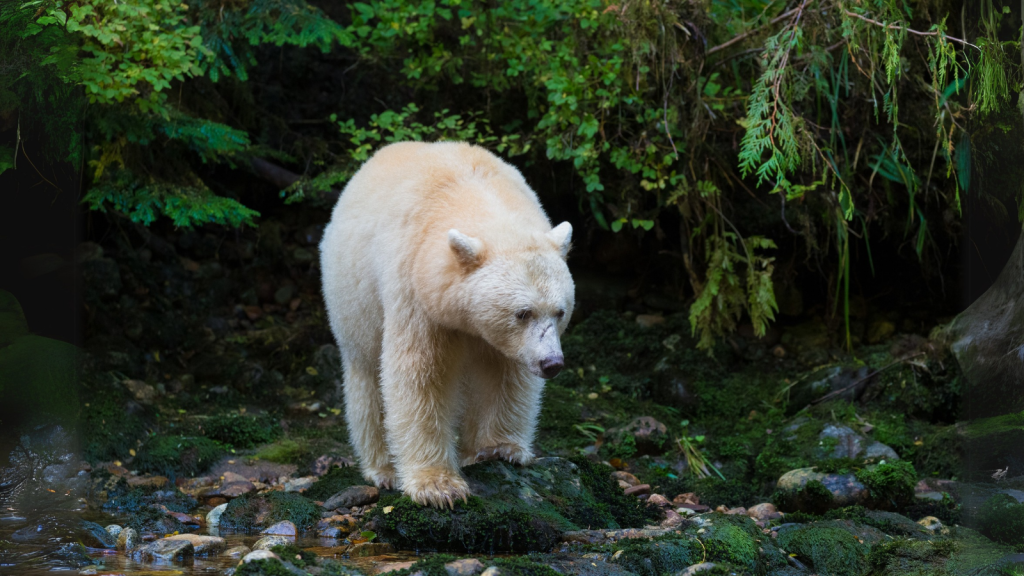
Rising temperatures and changing weather patterns are putting spirit bears at risk. These changes affect the salmon runs they depend on for food, potentially disrupting their delicate balance with nature. Warmer winters also mean less snowpack, which can impact the availability of water in streams during crucial salmon spawning periods.
They’re Symbols of Conservation
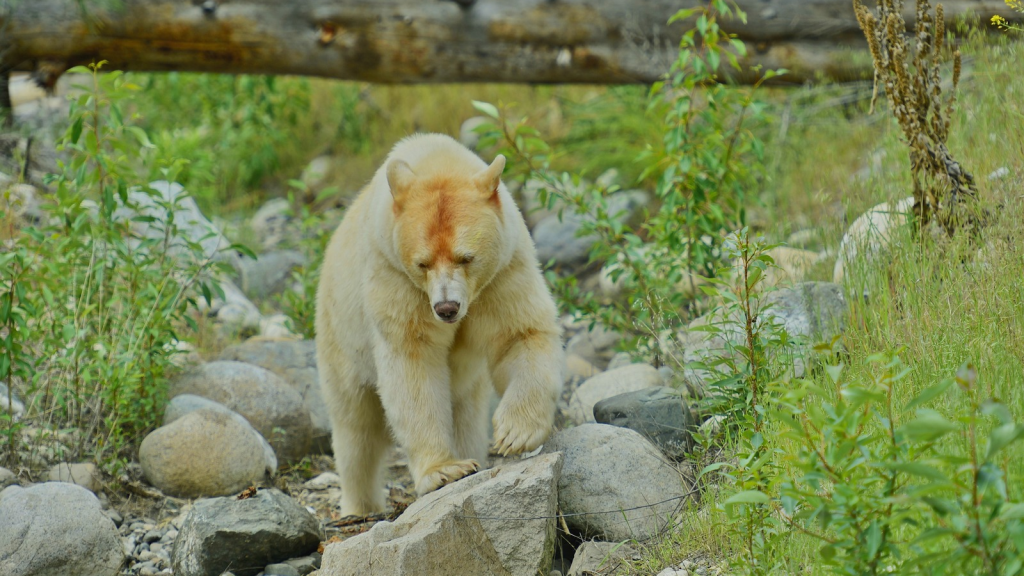
The Kermode bear has become a powerful symbol for protecting British Columbia’s Great Bear Rainforest. Their unique beauty and rarity have helped raise awareness about the importance of preserving wild spaces. Conservation efforts inspired by the spirit bear have led to the protection of over 6 million hectares of temperate rainforest.
Becky is a fervent wildlife enthusiast and pet care expert with a diploma in canine nutrition. Her love for animals stretches beyond the domestic, embracing the wild tapestry of global fauna. With over a decade of experience in animal welfare, Becky lends her expertise to OutlandishOwl through insightful articles, captivating wildlife information, and invaluable guidance on pet nutrition. Her work embodies a deep commitment to understanding the intricate lives of animals and a passion for educating others on sustaining natural habitats. Becky's hands-on conservation efforts and her knack for translating complex dietary science into practical pet feeding tips make her an indispensable voice for creatures great and small.

